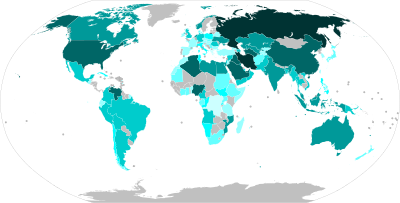

This is a list of countries by natural gas production based on statistics from The U.S Energy Information Administration (EIA).
Contents
Natural Gas in this list means dry natural gas; which is used in homes and business for heating, cooling, cooking and electricity generation, it can also be compressed and used as a fuel. [1]
Dry natural gas is mainly composed of methane. In contrast, wet natural gas also contains significant portions of other liquids such as ethane, propane or butane (also known as Natural Gas Liquids). Wet natural gas is used for petrochemicals as well as gasoline (petrol).
In 2023, the United States has led the world in both natural gas production and natural gas exports.